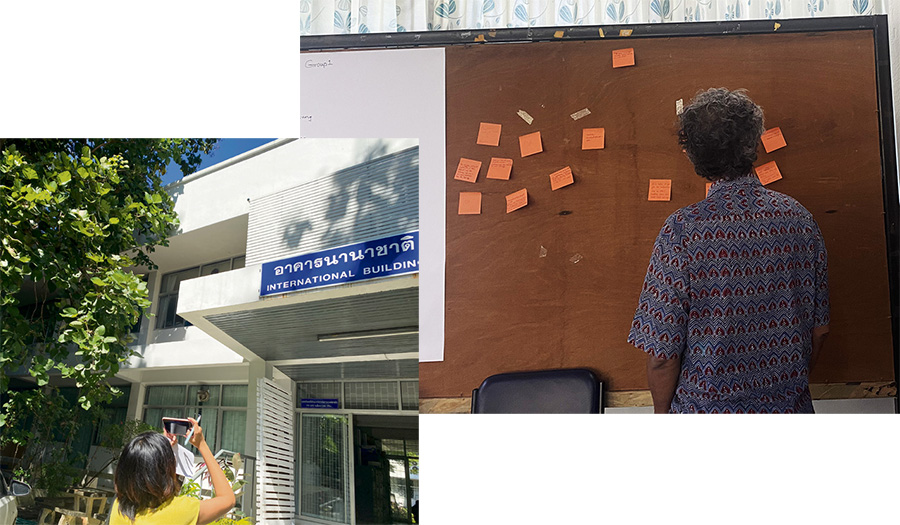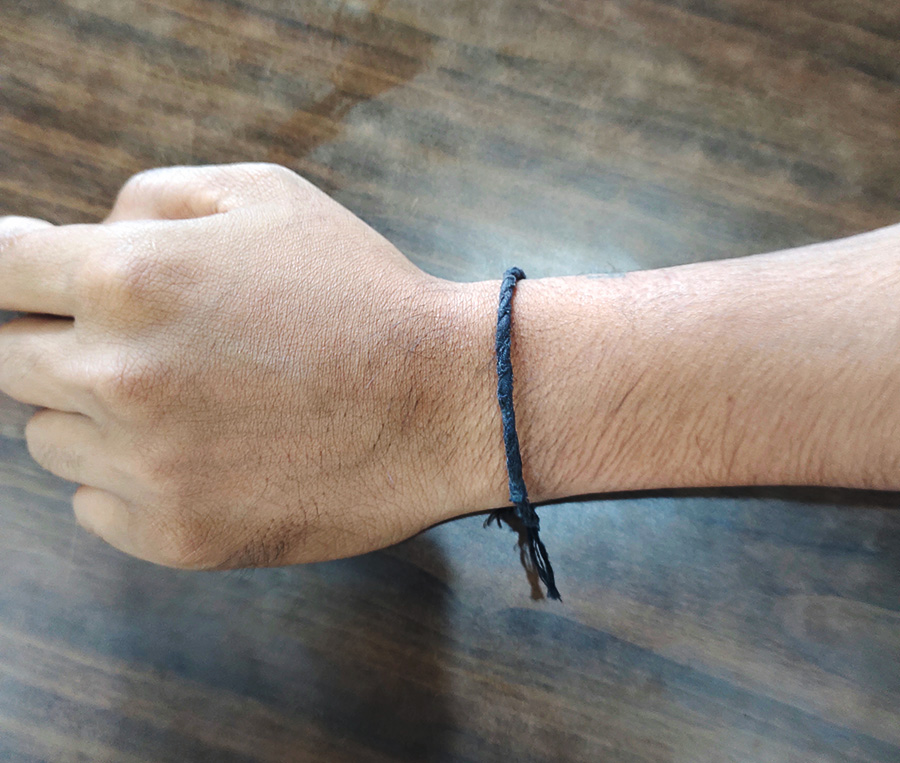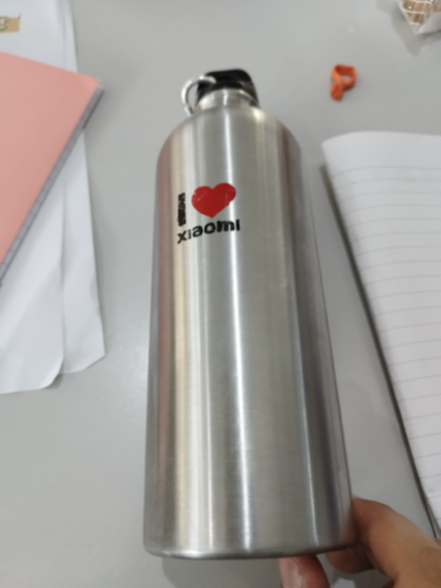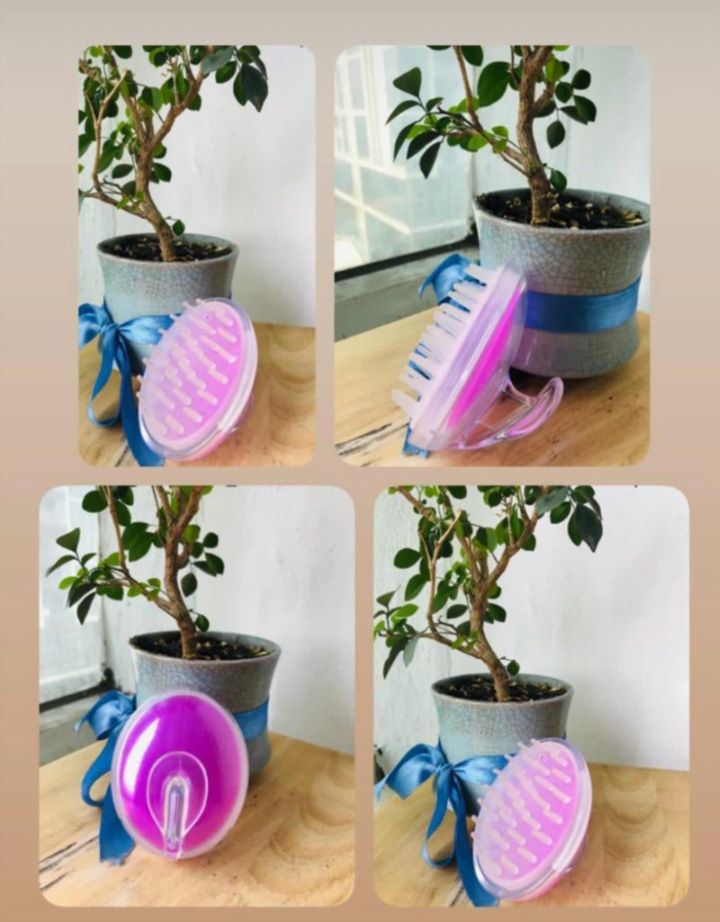Place-Based Education and Community Storytelling
How can education continue in times of crisis? What is the role of education in precarity? How can learning materials engage students’ own communities, histories, and surrounding environments? Our project (“Place-based Education and Community Storytelling”) grew out of a desire to answer these questions, but also to address current educational challenges in Myanmar. Starting in January 2023, a group of scholars from the Humanities Across Borders (HAB) network and their colleagues began working with educators and content-creators in Myanmar to help them integrate place-based education and storytelling methods into their work. We saw the value of this innovative place-based pedagogy to support emergency education by the Civil Disobedience Movement (CDM) in resource-limited grassroots schools and informal classrooms. Encouraging alternative learning methods through storytelling, we hope to capture learners’ stories, preserve endangered memories independent from the junta’s discourse, and create alternative, student-led teaching materials that valorise local identities.
Since the 2021 military coup, many students have been boycotting what they call ‘military slave education’(စစ်ကျွန်ပညာရေး or sit kyun pyinyayay). The World Bank (2023) estimates that only 22 percent of eligible students are enrolled in high school level studies in Myanmar. The educational crisis is particularly severe in ethnic autonomous areas along Myanmar’s borders, as well as in heartland areas such as Sagaing, where ongoing armed resistance is most intense and where the coup reinvigorated socio-economic marginalisation and cultural-political oppression.
This idea first emerged during HAB’s international “Craft as Method” workshop in Saint Louis, Senegal. At the workshop, Tharaphi Than from Northern Illinois University (United States) shared photos of students watching educational videos in caves to access non-military education. The photos were meant not merely to elicit sympathy, but rather to serve as a call to action. How can we respond collectively and support these individuals? Surajit Sarkar, an oral historian from Delhi (India) shared his work on community storytelling as a pedagogical resource with attending scholars, including Tharaphi and Jyothi Thrivikraman from Leiden University College (the Netherlands). In the following months, Yi Li from Aberystwyth University (United Kingdom) joined the effort, and a consensus was reached to organise training workshops for teachers from Myanmar.
Thus, in June 2023, the workshop “Underground Educators of Myanmar and What We Can Learn From Them” took place at the International Institute for Asian Studies. Subsequently, a five-week online course was held in October-November 2023, supported by The Worlds We Want (TWWW) research hub at Aberystwyth University. Through these events, we gained valuable experience in facilitating training activities and designing course materials. We paid particular attention to the special requirements of Myanmar teachers who asked for tailored, accessible content and activities, methods to encourage discussion among members of different backgrounds, and materials with a mixture of English and Burmese languages. This culminated, most recently, in an intensive, in-person, four-day training workshop, “Community Storytelling and Place-based Education: Learning with Memory Workshop.” 1 The workshop took place at the Regional Centre for Social Science (RCSD), Chiang Mai University, between 28 November and 1 December 2023, with four facilitators and 21 trainees living in Myanmar and Thailand.
The trainees were diverse in terms of region, religion, ethnicity, profession, age, and gender. Yet, despite the huge differences, they shared a common vision of resisting military rule by continuing education in their respective communities. Many participants were in their 20s and had thus endured disruptions to their own tertiary education in 2021. Since then, they have led a volatile, and sometimes precarious, life in the resistance movement. For them, the Chiang Mai workshop was their first time back on a university campus. The normality itself was overwhelming, and their dedication to this learning opportunity – especially while undergoing personal and collective traumas – was humbling. In an activity on the first day, we organised a short campus tour with specific tasks, and these young participants were clearly enjoying the walk, not only as a group activity aiming to practise the development of place-based materials, but also as an immersion in normal campus life with peers.
For this hands-on workshop, much effort was dedicated to activities, which were supported by short ‘lecture’ sessions outlining necessary theories and context. This was vital for keeping the thread focused, and to avoid trainees becoming confused and overwhelmed. Each day, two or three individual or group activities were conducted either inside the classroom or on-site (e.g., the campus tour). Such activities were guided by various prompts, including ‘tell the story of your name,’ ‘draw a map between your home and the market,’ and ‘storyboard a recent visit.’ All of this enabled the trainees to experience storytelling and place-based learning in a multi-sensory manner, as well as to see first-hand how teachers facilitate and navigate these sorts of pedagogical activities.

Fig. 1-3: Snapshots from the event “Community Storytelling and Place-based Education: Learning with Memory Workshop” in Chiang Mai, Thailand. (Photos by the authors, 2023)
One session was based on trainees’ personal objects. This proved to be particularly moving and opened up space for the students to discuss their own personal histories, but it also highlighted the power of stories about place. In this activity, groups comprised four trainees, each one of whom was assigned a role: one interviewer, one interviewee, and two note-takers. Here, interviewees, upon the guided prompts of the interviewer, answered questions about an everyday object brought to the workshop. The focus of this activity was practising interviewing, observing, and sharing stories. Each role in the group emphasised certain skills. The outcome of this two-hour exercise was a collection of simple yet moving stories associated with their recent lives and with strong emotional resonances.
As a training workshop dedicated to marginal communities, the use of language in the classroom is not only a communication tool but a symbol of power, dominance, and differential access to knowledge. Indeed, beyond the dichotomy of English and Burmese, there were undercurrents of sub-power associated with non-Burmese languages among ethnic trainees, whose own native languages such as Kachin, Karenni, and Mon were hardly represented in the classroom. This dynamic reflected the linguistic and ethnic complexity in Myanmar in general, and indeed among many resistance groups on the ground. To acknowledge the gap and to give voice to the trainees, facilitators quickly adjusted the language strategy and left the final assignment on the fourth day to be led entirely by trainees themselves. Here, each trainee presented a story of their own life, in a language chosen by themselves. This proved a great boost to classroom participation and engagement. Each person gave a passionate story that was close to their heart, igniting discussion on the topic and on storytelling techniques – much to the appreciation of the facilitators, now taking a backseat in order to let the stories and thoughts flow in the most comfortable way for all. Facilitators sat to the side of the room and had the stories translated (by an assistant on the computer so that live translation was happening in the background); we interjected as necessary but most of the feedback came from the participants themselves.
The four-day workshop concluded with trainees expressing their positive learning outcomes and their willingness to apply these newly learned methods within their respective communities. Stories generated during the sessions will be compiled, translated, and published as alternative learning materials, and the publication will also serve for the rest of the world as a valuable record of the hopes and struggles of a young generation from Myanmar. The training protocol will be developed as a toolkit for educators in conflict/displaced areas. The workshop in the tranquil campus under the revered and beautiful Doi Suthep of Chiang Mai city provided a much-needed occasion for these young, dedicated activists to cultivate new connections and new friendships, and to resume – even if temporarily – a life that was cruelly denied to them by political repression.
The Chiang Mai workshop and its aforementioned preparatory sessions have been an invaluable learning process for everyone involved. The inspiration was mutual, and we facilitators have learned as much as the trainees, if not more. While community storytelling and place-based education have been implemented in locations across the world over the years, the key issue is to sensibly adjust to each community with its unique needs. As scholars with mixed experiences in the Global North and South, all of us have previously worked with communities at the margins, both in our research and our practice. Yet in implementation, we are often affected by institutional habits that have been dominated by the North despite conscious efforts to adjust otherwise. Taking this further, and incorporating the twice-daily course correction feedback, the language of the workshop switched to Burmese on the last day, forcing us facilitators to follow and respond through the human and digital translation services available. This handed over the space in multiple ways to the participants, an act so empowering that many participants mentioned it in their feedback, and so did we as organisers.
The possibility of developing place-based stories – and of helping participants draw out psychologically fragile and traumatic experiences from the violence and displacement of their lives – made this workshop unique. For example, the sounds of aeroplanes and fireworks (it was the annual Loy Krathong festival in Thailand) made some initially fearful. It was evident that participants were trying to process their recent pasts in their own ways in the relative security of Chiang Mai. Why should stories of hurt, suffering, even death need to be told? Did they matter? How should they be told? This emerged a number of times among the participants themselves. Such questions gave trainees time to process their thoughts and words, while we facilitators tried to reassure them that this was legitimate, that their stories do, in fact, matter. The challenges they face will persist, but so will their struggle to continue fighting for a better place. And throughout the four days, we had difficult conversations about language, power, and privilege amongst the group. These discussions were needed, and we must sit in spaces of uncomfortableness to unlearn and learn. We don’t know what the future holds for these participants. They may not know either. But our small actions made a difference, and perhaps that is all for the moment. And perhaps this is a call for us all to find the power in small actions.
Epilogue: Three months after the workshop, participants are working as groups, compiling stories from their communities, finding ways to incorporate them into teaching and public education. Our workshop has an intangible outcome: empowering the participants to see that their world is knowable, and that it is worth knowing by people beyond Myanmar.
Yi Li is Lecturer in East and South East Asian History at Aberystwyth University, Wales, UK. Email: yil10@aber.ac.uk
Surajit Sarkar is Curator at Kerala Museum, Kochi (India) and former Associate Professor at Centre for Community Knowledge, Ambedkar University Delhi. Email: surajit.sarkar@gmail.com
Tharaphi Than is Associate Professor at Northern Illinois University, Faculty of World Languages and Cultures and Center for Southeast Asian Studies. Email: tthan@niu.edu
Jyothi Thrivikraman is Assistant Professor at Leiden University College the Hague, Faculty of Governance and Global Affairs, Leiden University (Netherlands). Email: j.k.thrivikraman@luc.leidenuniv.nl
All object stories translated from Burmese to English by HWM.

Do You Believe That Objects Have Souls, Too?
HWM
"Do you believe that objects have souls, too? I believe they do because of a particular object: my sandal. It was a gift from my friend, Kay Kayy. I met Kay Kayy at a very strange time in my life. Six months after our country, Myanmar, fell under dictatorship, I joined the resistance and went to a liberated area in the far south of the country. I met Kay Kayy there. She had been there before my arrival. She was short, smart, hardworking, kind, and hot-headed. She had a deep affection for the 'Snoopy' character. We bonded over art, literature, and a zero-tolerance policy towards sexism – our shared interests. We became sisters not by blood, but by spirit. I looked up to her as she protected me like family. Together, we faced challenges and took care of each other.
As a present for my 21st birthday, she gave me a sandal – durable, lightweight, and comfortable for hiking, knowing my previous footwear caused me difficulties. One day, she had to go on a work trip, promising to be back with my favourite snacks by the same night. However, she never returned. She was seized by the military on her way. I couldn't believe it. Since we lived together in the same barrack, it became my duty to clear out her things. How could I? I told myself she would come back, living in denial. The image of her wearing her favourite Snoopy T-shirt, assuring me she would return, remained in my mind. It took me a month to realise she wouldn't return. The only person who made me feel at home was gone.
I was wearing the sandal when I heard the news of her getting sentenced to seven years in prison. I wear the sandal all the time – in the jungle, in the mountains, through the mud, and on concrete roads. Whenever I wear it, I feel that she's with me. It has become a part of me. So, I have to say, I believe objects have souls, too.

Whispers of the Reminiscence
Mi Lai
Reminiscence involves a multitude of emotions – the good, the bad, the sadness, the happiness, and the yearnings. For me, it is wrapped in a piece of my mother's longyi. She gave it to me before my journey in accordance with our tradition, and now it serves as a reminder of yearning and longing for home.
Even though things are going well in the present, I find myself longing for my mother and my home in Anyar region. Even without sufficient electricity and water supply, I feel that being with my family will bring me a sense of safety and comfort. I have made the decision to return home one day, while my mother is still alive.
I often think about those who, like me, are separated from their homes due to conflicts in our country. My heart goes out to them, and I pray for their well-being and reunion with their loved ones. For me, this piece of longyi holds immense value for me since it holds an intimate connection with my family.

Through the Inferno
Khatsitt
I am an undocumented person living in Mae Sot, Thailand. One day, I was selected for a workshop in Bangkok. Since I don’t have any documentation, I couldn’t travel legally. So, most of my journey was about walking, hiking, and hitchhiking. The logistics person of the journey didn’t communicate about the route in advance. The journey turned out to be a tough 40-kilometre trek lasting over ten hours. I only brought a backpack, but my companion brought three backpacks, a violin, and a stand. So, I had to help him carry them.
Our journey began from Mae Sot to a village near Phopra, by car with three transit points in between. After that, we started the hike with the guide at ten in the morning. After five hours of hiking, we came across a stream. Seeing it brought me a sense of relief, even though my body was covered in mud. Feeling uncertain about how much further we had to go, we communicated with the guide to learn our whereabouts, but the language barrier was difficult to get through. Despite this, we still had the energy in our bodies and water in our bottles to continue. After passing the stream, we were handed over to a different local guide. Contrary to our expectations to continue by car, we had to press on with our hike in the heavy rain. The slippers on my feet, combined with the weight of two backpacks, caused me to lose my balance repeatedly. By the time we reached the top of one of the mountains, I had no energy left. My limbs felt heavy, and my body begged for rest. Despite this, the guide gestured that a wild animal, a tiger, was nearby. With no mobile service in the middle of nowhere, I had no choice but to keep moving.
Later, a sense of thirst consumed me, and I reached for my water bottle, which I borrowed from my friend who lived with me in Mae Sot, only to find it empty. With each step, I struggled to carry my legs, stumbling frequently along the way. The thirst grew increasingly powerful, driving me to drink whatever water I could find – whether it was unclean water drops on leaves, or even the condensation on the surface of the water bottle itself. In that moment, as my body desperately sought hydration, I truly understood the value of water.
It was 18:30 when we reached a trail between a ravine and a bank. To our horror, we discovered a dead body in the bush beside the trail, surrounded by swarms of large flies. The stench was so overpowering that I was forced to run after the guide and the companion, who were already 20 yards ahead of me. In my haste, I even lost my slippers along the way. With only 75 percent battery left on my phone, we relied on its flashlight as we continued walking, stumbling, and struggling along the rough terrain.
As the agony neared its end, we were relieved to come across another stream. Despite my concerns about my phone battery dropping below 20 percent, I filled my water bottle from the stream and drank deeply. With a heavy heart, I looked around my surroundings and noticed gutters, hinting at the end of our journey – an inferno.
After walking for some time, we finally reached the end of our journey, where a tractor awaited us, ready to transport us out of our misery. As the clock struck 21:35 on October 6, 2023, we breathed a sigh of relief, grateful to have survived the arduous trek.

My Dearest Silicone Friend
Shayi
I'm Miss Manaw, known as the smooth talker, and I was born in a rural area in Kachin. As the eldest of four siblings, I've always been prioritised by my parents and relatives. From birth, I've tended to be obsessive and assertive in ways of getting what I want. However, as I grew older, I came to see these traits as both my strengths and weaknesses. During my teenage years, I experienced an eventful story that I'd like to share. When I was younger, my hair was healthy and strong. However, as my family size grew and my parents became busier with my younger siblings, I began to pay less attention to my hygiene. Eventually, I discovered that lice had infested my once shiny, dark hair, and seeing those lice filled me with shame and worries. Despite trying different shampoos and combs, I couldn't find a solution. This experience taught me the importance of choosing the right tools and products to maintain my hair, especially as it began to suffer damage.
During that time, I discovered my saviour: a silicone comb, which I read about in a review on social media. Unfortunately, it was only available in Yangon and not in rural areas like mine. Fortunately, I had relatives from Yangon who were visiting our area in Kachin. I seized the opportunity and asked them to bring me the silicon comb that I desperately needed.
When I tried the silicone comb, it felt like a perfect fit for me. Not only did it solve the lice problem, but it also provided additional benefits. The soft texture while combing and the gentle massage it gave to my scalp were remarkable. It stood out from other types of combs, bringing me immense satisfaction. I've been using this silicone comb for over a decade now, since my teenage years, and I've decided to continue using it for the rest of my life. It's truly become a crucial part of my hair care routine.